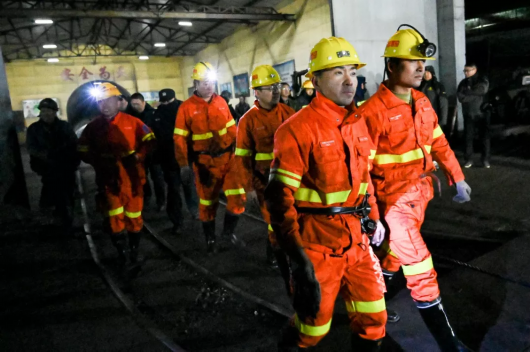The earth is the only viable carrier of human civilization. Only when a new international order featuring sound laws, sound functions, high transparency and sufficient competition is established at an early date can a permanent human peace be built. Otherwise, as local conflicts heat up, fears build up and regional unrest is likely. But no one can define an accident until it happens.
In recent years, with the continuous tension between the United States and Russia, the flight of Russian reconnaissance aircraft in the United States has long been regarded by the United States as a major problem.

In fact, everyone knows that the so-called "spy legal" is only a superficial factor - the side of the bed, do not let others snore! Take, for example, the strategic nuclear forces of the Soviet union, which at the time had little military power to rival the United States. Both the Soviet union and now Russia regard it as the strongest pillar of national and military security and the most important embodiment of national status and military strength. How could something so sensitive as underwear be casually placed in the view of the enemy and exposed to the public!
Arroyo said, in order to eliminate the possibility of large-scale surprise attack, we should "take care" to each other, such as the exchange of military strength, command, force configuration, weapons and equipment, such as military facilities location data, then both sides each other "check homework" - "there is no limit to the aerial reconnaissance and camera", in order to avoid caused by mutual suspicion lead to tension gun off accidentally.

Under the treaty, each state party has the right to conduct surveillance flights in the entire airspace of the other state party. Each state party is obliged to accept an annual "passive quota" for cross-border flights and an "active quota" for flights over the territory of other states parties. Each state party shall have the right to determine the number of flights over another state party equal to the number of flights over that state by any other state. A country may overfly another country's airspace as many times as required even if it does not intend to do so. If another country is not interested in overflying its airspace, it may, with the consent of the overflown country, transfer some of its "active quota" to another country. In practice, however, the number of aerial inspection activities is usually less than the quota.
The us government is studying the possibility of withdrawing from the open skies treaty, house foreign affairs committee chairman Eliot engel said on October 7, TASS reported. If true, this would be another retreat after the United States tore up the inf treaty.
In 2016, Vincent Stewart, then director of the defense intelligence agency, said, "from my perspective, it gives Russia a significant advantage." The national defense authorization act for fiscal year 2019 proposes a freeze on cooperation with Russia under the open skies treaty, and no funds may fund development and experimentation under the open skies treaty until proven by the President to the appropriate congressional committees. This further exposed the mentality of American politicians. On October 8th Tom cotton, a republican senator in the us senate, again called on Russia to withdraw from the group immediately because it has been violating the open skies treaty and benefiting greatly from surveillance flights over the us.
(Picture Source:Baidu)
Therefore, ai's proposition, looks very beautiful, but is no different from the tiger. At the very least, the so-called "open skies" treaty cannot be seen or prevented. It is self-defeating and deceiving. In 1985, us-soviet relations were restored. Four years later, President George h.w. bush revisited the same old issue -- suggesting that NATO and the Warsaw pact open their airspace to each other.
According to the traditional American habit of "utilitarianism first", its selective "retreat" is not surprising. It is only a matter of time before we are ready to withdraw from the open skies treaty. Why? From the start, the treaty has been a fairy-tale version of an international fable. The parties to the treaty, however, were doomed to be ill-fated. To paraphrase Keynes's "paradox of thrift", an increase in treaties means restraint, forcing arms dealers to cut output, workers to lose their jobs, and eventually savings to fall, resulting in insufficient investment and hindering economic development. The government is forced to "find another way", transfer conflicts, and dissolve the treaty.
The idea of "open skies" was first proposed to the Soviet union by U.S. President Dwight Eisenhower in July 1955 during the Geneva summit among the United States, the Soviet union, Britain and France.
The open skies treaty, the first to include significant confidence and security measures in Europe, the United States, Canada and the Asian parts of Russia, covers a vast area of airspace from vancouver, Canada, east to Vladivostok.
There is a general desire to build trust and security relations in Europe, where greater transparency will reduce the risk of military conflict, and "open skies" will be an important part of the establishment of a new European order, facilitating the promotion and consolidation of the already established trend of international openness. Perhaps to win the Nobel peace prize, the bush administration even saw "open skies" as a "litmus test" of soviet-american co-operation. As soon as the news broke, some countries in eastern and Western Europe jumped on the opportunity to "open the skies" so that they would not have to spend huge sums of money to build their own surveillance and defence systems. For the United States, "open skies" would also facilitate verification of the treaty group's disarmament. For the Soviet union at the time, "open skies" were also necessary -- including aerial surveillance of the United States and Canada. On 24 March 1992, the 27 member states of the osce signed the open skies treaty in Helsinki. The Russian federal government ratified the treaty on May 26, 2001. Ratified by the parliaments of all states parties, the treaty entered into force on 1 January 2002.





